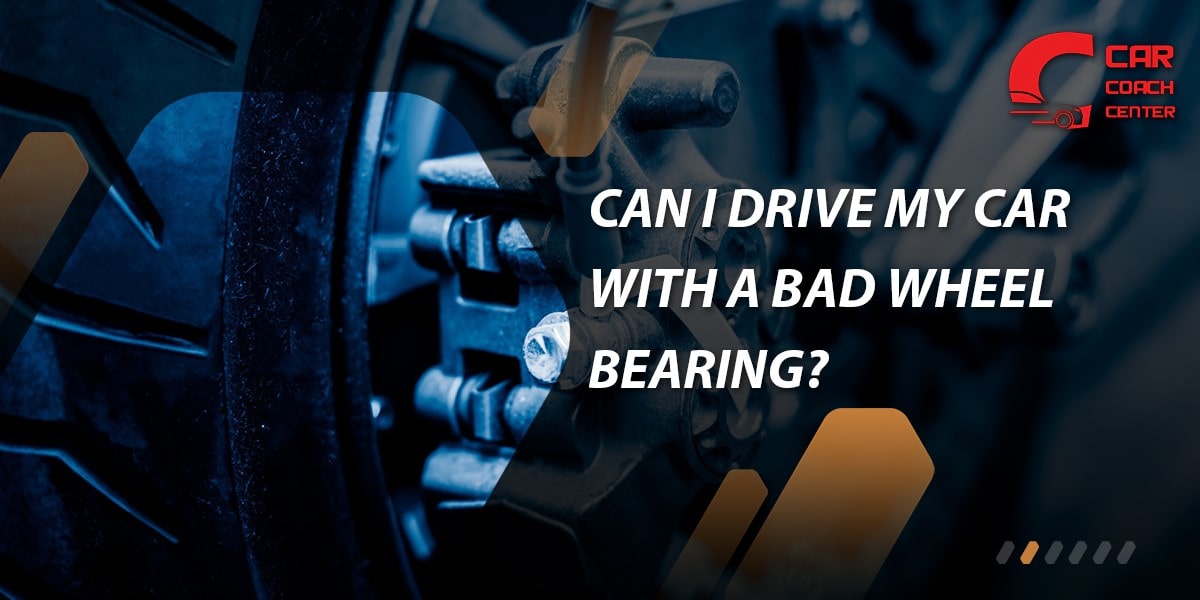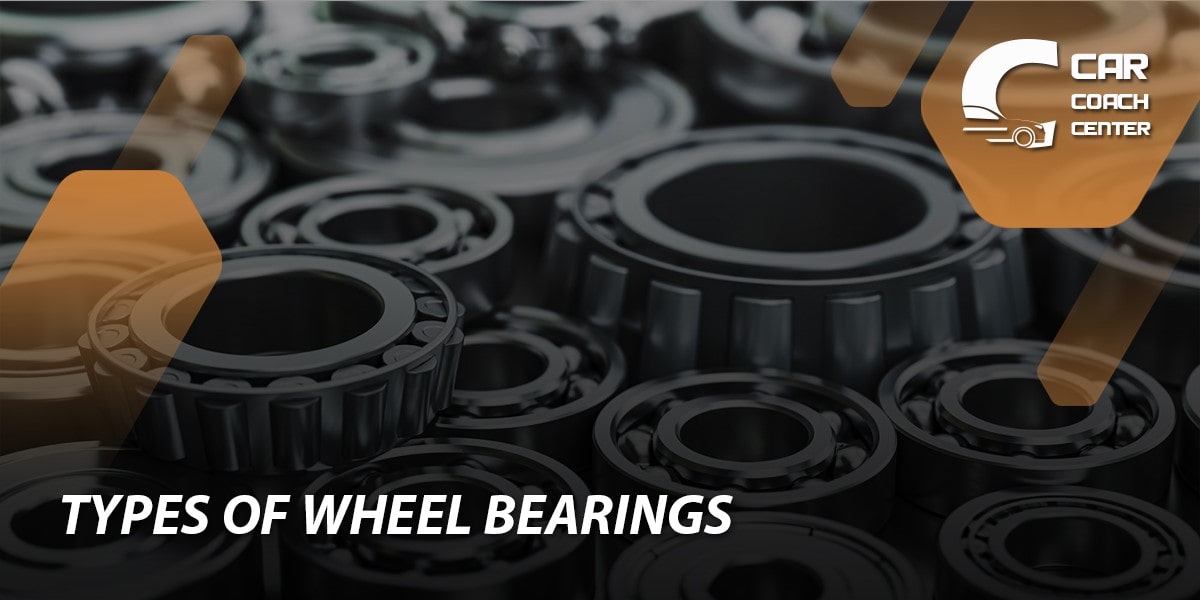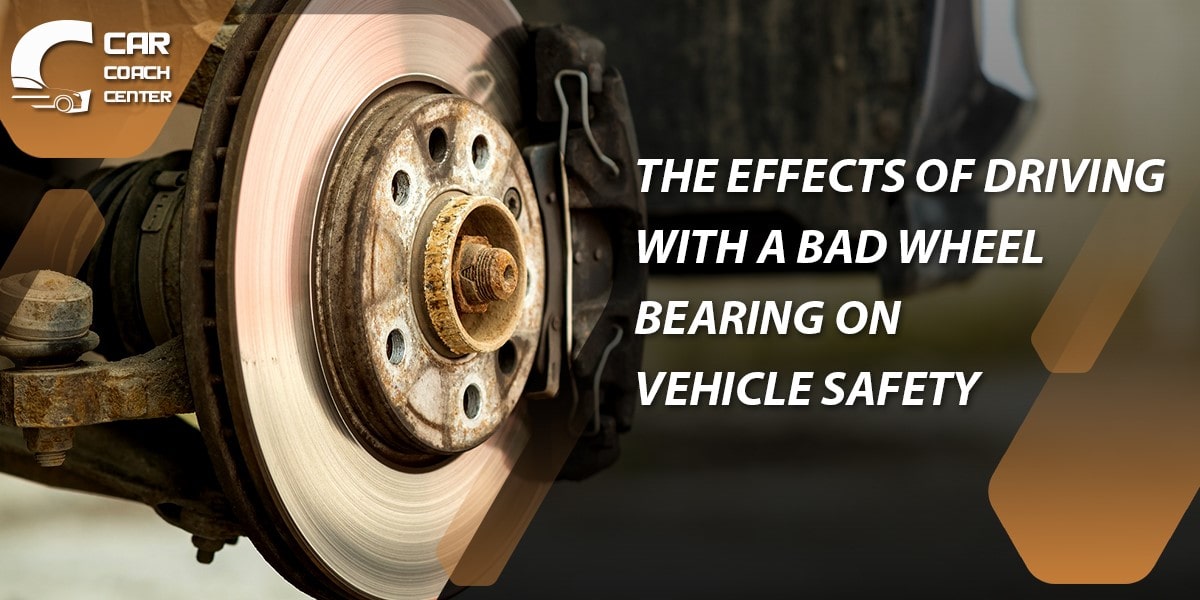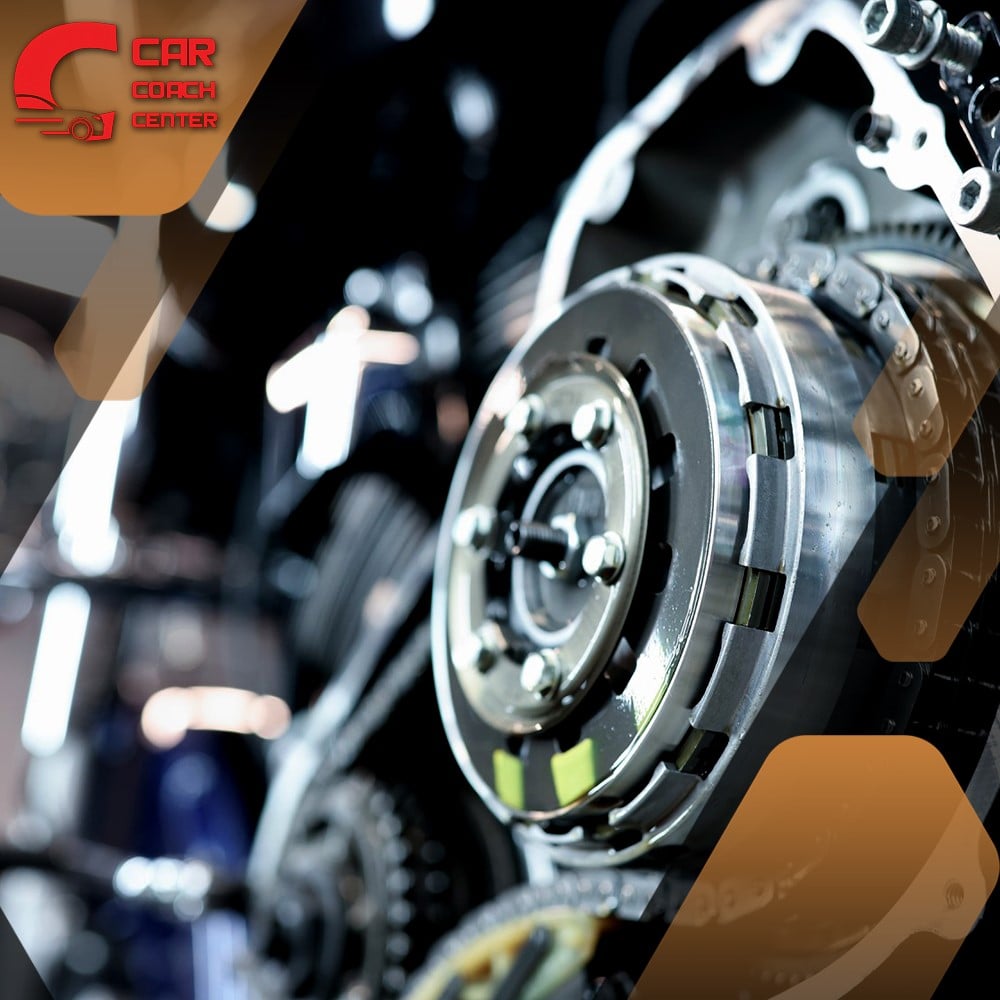Can I Drive My Car With A Bad Wheel Bearing

As you cruise down the open road, the smooth ride of your car is made possible by a complex network of components working in harmony. The wheel bearing is a crucial element that often goes unnoticed but plays a vital role in your vehicle’s performance. These small but mighty components let your wheels rotate smoothly, reducing friction and ensuring optimal driving conditions.
However, what happens when a wheel bearing goes bad? Can you continue to drive your car without immediate consequences? In this article, we will delve into the topic of driving with a bad wheel bearing, exploring the potential risks, dangers, and implications of neglecting this essential part of your vehicle’s suspension system. By understanding the impact of a faulty wheel bearing, you can make informed decisions to ensure your safety and preserve the well-being of your car. So let’s embark on this journey of knowledge and uncover the truth about driving with a bad wheel bearing.
What is a Wheel Bearing and its Function in a Car?
Before we dive into the implications of driving with a bad wheel bearing, it’s crucial to grasp the significance of this seemingly small but integral component in your car’s mechanical system.
A wheel bearing is a set of steel balls or rollers housed within a metal ring known as the “bearing race.” Typically, a vehicle has four-wheel bearings, one for each wheel. These bearings are strategically positioned at the wheel’s hub, allowing it to rotate smoothly around the axle shaft.
Function of Wheel Bearings
Load Distribution
Wheel bearings bear the vehicle’s weight, and the forces exerted on it during acceleration, braking, and cornering. They efficiently distribute the load and help maintain a stable and balanced ride.
Reduction of Friction
As the wheels rotate at high speeds, friction between metal components can cause significant wear and tear. Wheel bearings play a crucial role in minimizing this friction, enabling the wheels to spin with minimal resistance.
Absorption of Axial and Radial Loads
Vehicles experience both axial (thrust) and radial (side) loads during motion. Wheel bearings are designed to handle these loads, ensuring the wheels remain firmly attached to the vehicle’s chassis and can rotate freely.
Smooth Steering and Handling
A well-functioning wheel bearing contributes to smooth and responsive steering. It allows the wheel to turn effortlessly, promoting precise control over the vehicle’s direction.
Heat Dissipation
Due to the constant rotation and friction, wheel bearings generate heat. Their design incorporates features that aid heat dissipation, preventing overheating and potential damage.

There are two main types of wheel bearings used in cars
Ball Bearings
These bearings consist of small steel balls arranged in a circular race. They are commonly used in older vehicles and are suitable for lighter loads.
Roller Bearings
Roller bearings use cylindrical or tapered rollers instead of balls. They are more durable and capable of handling heavier loads, making them popular in modern vehicles.
Importance of Maintaining Wheel Bearings
Considering their vital role in ensuring smooth and safe driving, maintaining wheel bearings is crucial. Regular maintenance and inspection can help identify early signs of wear and tear, allowing for timely replacements and preventing further damage to the surrounding components.
How to Recognize Signs of a Bad Wheel Bearing?
A bad wheel bearing can significantly impact your driving experience and compromise your vehicle’s safety. Recognizing the early warning signs of a failing wheel bearing is crucial for prompt intervention and preventing further damage. Here are some common indicators to watch out for:
Unusual Noises
One of the primary signs of a bad wheel bearing is the emergence of strange noises. These noises often manifest as a humming, growling, or rumbling sound, which may increase in intensity as you accelerate. Pay attention to whether the noise persists or changes when you make turns, as this can provide further clues about the affected wheel.
Vibration and Steering Instability
Faulty wheel bearings can cause vibrations to be transmitted from the wheels to the steering wheel. If you notice a significant increase in steering wheel vibrations, especially at higher speeds, it could be an indication of a bad wheel bearing. Additionally, you might experience a sense of instability or looseness in the steering, making it more difficult to maintain control of the vehicle.
Uneven Tire Wear
Inspect your tires for uneven or excessive wear signs. A bad wheel bearing can disrupt the alignment and cause irregular tire wear patterns. Look for areas of excessive tread wear on one side of the tire compared to the other, as this can suggest an issue with the associated wheel bearing.
Pulling Sensation
When a wheel bearing becomes worn or damaged, it can affect the alignment of the wheel. This misalignment may cause the vehicle to pull or drift to one side while driving, even when the steering wheel is held straight. If you notice consistent pulling tendencies, it’s essential to have your wheel bearings inspected.
ABS Warning Light Activation
A failing wheel bearing can sometimes trigger the Anti-Lock Braking System (ABS) warning light on your dashboard. Modern vehicles are equipped with wheel speed sensors that detect irregular wheel rotation. When a wheel bearing deteriorates, it can disrupt the sensor’s readings, activating the ABS warning light.
Heat or Excessive Wheel Hub Temperature
After driving for an extended period, carefully touch the wheel hub of each tire. If you notice excessive heat radiating from a specific wheel hub, it may indicate a failing wheel bearing. Heat generation is often a result of increased friction due to inadequate lubrication or worn-out bearing components.
Can I Drive with a Bad Wheel Bearing?
Driving with a bad wheel bearing is a question that often arises when faced with the inconvenience of a faulty component. However, it’s essential to understand the potential risks and dangers associated with such a decision. While it may be tempting to continue driving in the short term, doing so can have serious consequences for both your safety and the condition of your vehicle.
Immediate Risks
Loss of Control
A bad wheel bearing can compromise the stability and handling of your vehicle. As the bearing deteriorates, it can cause the affected wheel to wobble or exhibit excessive play. This leads to losing control over the vehicle’s steering, making it more difficult to navigate turns or maintain a straight path.
Braking Performance
Wheel bearings contribute to the proper functioning of the braking system. A faulty bearing can negatively impact the braking performance, reducing stopping power or uneven braking. This can significantly increase the stopping distance, increasing the risk of accidents, especially in emergencies.
Wheel Detachment
Although rare, severe neglect of a bad wheel bearing can result in catastrophic wheel failure and detachment. A worn-out bearing that is left unattended can cause the wheel to separate from the vehicle while in motion, leading to a complete loss of control. This severely threatens your safety, the safety of your passengers, and other road users.
Long-Term Consequences
Additional Damage to Surrounding Components
A bad wheel bearing stresses other suspension and steering components, such as the hub, control arms, and tie rods. Continued driving with a faulty bearing can cause these parts to wear out faster, leading to more extensive and costly repairs.
Increased Repair Costs
Ignoring a bad wheel bearing can significantly damage the wheel hub and spindle, necessitating their replacement as well. The longer the problem is left unaddressed, the more extensive the damage can become, leading to more expensive repairs.
Compromised Safety of Other Wheel Bearings
Wheel bearings usually deteriorate gradually. If one bearing has already failed, the remaining bearings might be under increased stress. This can accelerate their wear and decrease their lifespan. Driving with a bad wheel bearing puts additional strain on the unaffected bearings, potentially causing them to fail prematurely.

The Effects of Driving with a Bad Wheel Bearing on Vehicle Safety
Driving with a bad wheel bearing can significantly affect your vehicle’s safety, compromising its performance. Understanding these effects is crucial to grasp the importance of promptly addressing a faulty wheel bearing. Here are some key safety concerns associated with driving with a bad wheel bearing.
Reduced Vehicle Stability
A bad wheel bearing can lead to instability in your vehicle’s handling. As the bearing wears out, it creates excessive play in the wheel, causing it to wobble or exhibit abnormal movements. This instability can make it challenging to maintain control over the vehicle, especially during turns or at higher speeds, increasing the risk of accidents.
Compromised Steering Response
A faulty wheel bearing can affect the steering responsiveness of your car. As the bearing deteriorates, it can introduce play and inconsistency in the steering system, leading to a delayed or imprecise response to steering inputs. This can impair your ability to maneuver the vehicle effectively and react quickly to changing road conditions.
Impaired Braking Performance
Wheel bearings play a crucial role in properly functioning the braking system. A bad wheel bearing can negatively impact the braking performance, causing uneven braking or reduced stopping power. This can significantly increase the distance required to bring your vehicle to a halt, jeopardizing your ability to stop safely in critical situations.

Increased Risk of Tire Failure
A faulty wheel bearing can affect tire wear and performance. Misalignment resulting from a bad bearing can cause uneven tire wear patterns, leading to premature tire failure. Bald spots, cupping, or irregular wear can compromise traction, stability, and handling, increasing the risk of accidents, especially in adverse weather conditions.
Potential Wheel Detachment
Continued driving with a severely worn or neglected wheel bearing can lead to wheel detachment, although rare. When a bearing fails, it can cause the wheel to separate from the vehicle while in motion. This catastrophic event results in a complete loss of control. It can lead to serious accidents, posing a significant threat to your safety and the safety of others on the road.
Impact on Suspension Components
A bad wheel bearing stresses other suspension components such as the hub, control arms, and tie rods. This increased strain can accelerate their wear and compromise their structural integrity. If left unaddressed, it can lead to further damage and costly repairs, affecting your vehicle’s overall safety and performance.
The Potential Damage Caused by Driving with a Bad Wheel Bearing
Driving with a bad wheel bearing can lead to various damages beyond the bearing. Ignoring the early signs of a faulty bearing and continuing to drive can result in more severe complications, both for your vehicle and your wallet. Let’s explore the potential damages that can occur.
Wheel Hub Damage
A worn-out or damaged wheel bearing can exert excessive stress on the wheel hub. Over time, this can cause the hub to wear down, resulting in a loose fit and reduced stability. If left unattended, it may require replacing the wheel hub in addition to the bearing, significantly increasing the repair costs.
Axle Shaft Damage
The axle shaft connects the wheel hub to the transmission or differential, transferring power from the engine to the wheels. A bad wheel bearing can introduce additional strain on the axle shaft, leading to premature wear or even bending. If the axle shaft becomes damaged, it will require replacement, which is a complex and costly repair.
Premature Tire Wear
Faulty wheel bearings can disrupt the alignment of the wheels, leading to irregular tire wear patterns. The misalignment can cause specific areas of the tire to wear down faster than others, resulting in premature tire replacement. Uneven tire wear compromises traction and handling and adds an unnecessary expense.
Strain on Suspension Components
As the wheel bearing deteriorates, it can place excessive stress on other suspension components, including the control arms, tie rods, and struts. The added strain can cause these components to wear out faster, leading to further repairs and replacements. Neglecting a bad wheel bearing can escalate the damage and increase the overall cost of repairs.
Braking System Complications
A failing wheel bearing can negatively impact the braking system’s performance. As the bearing wears, it can introduce play in the wheel, affecting the accuracy and responsiveness of the brakes. This can lead to uneven braking, longer stopping distances, and compromised braking performance, increasing the risk of accidents.
Increased Repair Costs
Delaying the replacement of a bad wheel bearing can result in more severe damage to surrounding components. The longer the issue persists, the more likely it is that additional parts will be affected and require repair or replacement. Consequently, the overall repair costs can escalate significantly.
Conclusion
In conclusion, addressing a bad wheel bearing is crucial for your vehicle’s safety, performance, and longevity. Driving with a faulty wheel bearing can have detrimental effects on vehicle stability, steering response, braking performance, and overall safety. It is essential to recognize the signs of a bad wheel bearing and take immediate action.
Remember, the information provided in this article serves as a general guide. For specific advice tailored to your vehicle, it is advisable to consult a trusted automotive repair center. If you have any concerns about your wheel bearings or other car-related topics, visit carcouchcenter.com, where you can find more articles, resources, and expert advice.
Can I drive with a bad wheel bearing?
Driving with a bad wheel bearing is not recommended due to safety risks and potential vehicle damage.
How long can I drive with a bad wheel bearing?
The duration varies depending on the severity of the issue and driving conditions, but it is best to address the problem promptly.
Can I replace a wheel bearing myself?
Wheel bearing replacement requires specialized knowledge and tools, so seeking professional help for proper installation is recommended.


